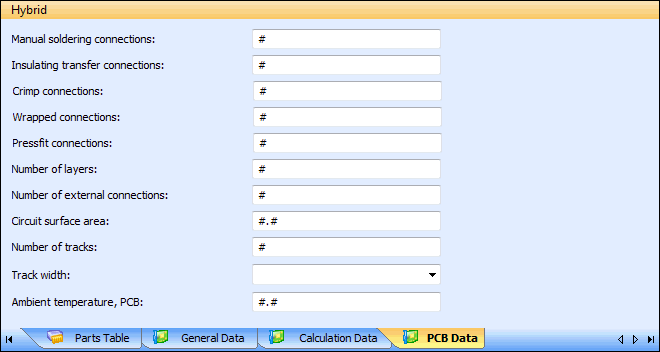PCB Data Pane
The PCB Data pane is used only with the IEC TR 62380 and RDF 2000 models. In it, you supply the parameters required by these models for performing an additional failure rate calculation for a printed circuit board (PCB). This calculation takes place in addition to the failure rate calculations for the individual parts in the PCB.

For the PCB Data pane to be shown, the IEC TR 62380 or RDF 2000 model must be selected for the top-most assembly (system) and PCB must be selected in the General Data pane for the PCB assembly. For more information, see Indicating an Assembly is a PCB (IEC TR 62380 or RDF 2000 Model Only). If you later clear PCB, the PCB Data pane is hidden, and any data that you might have entered in it is ignored.
The following table describes the data fields that appear in the PCB Data pane for an assembly.
Field | Description |
|---|---|
Manual soldering connections | The number of connections that have been manually soldered. |
Insulating transfer connections | The number of insulating transfer connections. |
Crimp connections | The number of crimped connections. |
Wrapped connections | The number of wrapped connections. |
Pressfit connections | The number of pressfit connections. |
Number of layers | The number of layers on the PCB itself. |
Number of external connections | The number of external connections to the PCB. |
Circuit surface area | The total usable area (cm2) for attaching circuits within the perimeter of the PCB. |
Number of tracks | The total number of connections between components on the PCB divided by two. |
Track width | The distance across the tracks on the PCB in millimeters. Knowing the track width helps to determine the signal-carrying capacity of the track. Many different choices are available, including 0.56, 0.35, and more. |
Ambient temperature, PCB | The ambient temperature in degrees C at which the PCB properly functions. |